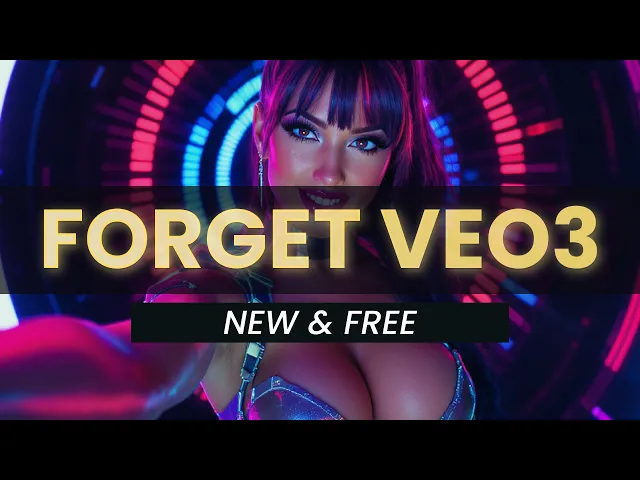VEO3 is Way Too Expensive: I Tried The FREE Alternative…

Free AI video editing tools crush expensive options
In a digital creator economy where professional software can cost hundreds or even thousands of dollars, the emergence of free, AI-powered video editing alternatives is nothing short of revolutionary. A recent YouTube comparison test between VEO3, a premium AI video editing platform priced at $39 monthly, and Kreadoai, a completely free alternative, reveals some surprising insights about the state of AI video tools. The findings suggest we may be witnessing a significant democratization of creative tools that could reshape content creation for businesses of all sizes.
Key findings from the comparison:
-
Free doesn't mean inferior – Kreadoai matched or exceeded VEO3's capabilities in most areas despite costing nothing, producing comparable automatic B-roll generation, text analysis, and overall editing quality
-
Processing limitations matter – While VEO3 handles longer videos (up to 60 minutes), Kreadoai caps uploads at 15 minutes, representing a meaningful constraint for certain professional use cases
-
Speed-to-output favors free tools – Surprisingly, the free Kreadoai processed videos faster than its paid competitor, completing edits in approximately 3 minutes versus VEO3's 5+ minutes
The most compelling insight from this comparison isn't just that free tools exist—it's that they're genuinely viable for professional use. This represents a fundamental shift in the content creation landscape. Just a few years ago, professional-grade video editing required expensive software licenses, high-end computers, and specialized training. Today, AI-powered tools are eliminating these barriers, potentially enabling any business to produce polished video content without significant investment.
This democratization aligns with broader industry trends. Adobe, long the gold standard for creative professionals, faces increasing pressure from AI-native challengers that offer simplified workflows at lower price points. Meanwhile, businesses increasingly need video content for social media, training, marketing, and customer communication—creating perfect conditions for these accessible tools to thrive.
What's particularly interesting is how these free tools approach monetization. Rather than charging users directly, platforms like Kreadoai appear to be pursuing scale first, likely with plans to introduce premium features later or monetize through other means. This "freemium" approach benefits early adopters who can access surprisingly capable
Recent Videos
How To Earn MONEY With Images (No Bullsh*t)
Smart earnings from your image collection In today's digital economy, passive income streams have become increasingly accessible to creators with various skill sets. A recent YouTube video cuts through the hype to explore legitimate ways photographers, designers, and even casual smartphone users can monetize their image collections. The strategies outlined don't rely on unrealistic promises or complicated schemes—instead, they focus on established marketplaces with proven revenue potential for image creators. Key Points Stock photography platforms like Shutterstock, Adobe Stock, and Getty Images remain viable income sources when you understand their specific requirements and optimize your submissions accordingly. Specialized marketplaces focusing...
Oct 3, 2025New SHAPE SHIFTING AI Robot Is Freaking People Out
Liquid robots will change everything In the quiet labs of Carnegie Mellon University, scientists have created something that feels plucked from science fiction—a magnetic slime robot that can transform between liquid and solid states, slipping through tight spaces before reassembling on the other side. This technology, showcased in a recent YouTube video, represents a significant leap beyond traditional robotics into a realm where machines mimic not just animal movements, but their fundamental physical properties. While the internet might be buzzing with dystopian concerns about "shape-shifting terminators," the reality offers far more promising applications that could revolutionize medicine, rescue operations, and...
Oct 3, 2025How To Do Homeless AI Tiktok Trend (Tiktok Homeless AI Tutorial)
AI homeless trend raises ethical concerns In an era where social media trends evolve faster than we can comprehend them, TikTok's "homeless AI" trend has sparked both creative engagement and serious ethical questions. The trend, which involves using AI to transform ordinary photos into images depicting homelessness, has rapidly gained traction across the platform, with creators eagerly jumping on board to showcase their digital transformations. While the technical process is relatively straightforward, the implications of digitally "becoming homeless" for entertainment deserve careful consideration. The video tutorial provides a step-by-step guide on creating these AI-generated images, explaining how users can transform...
